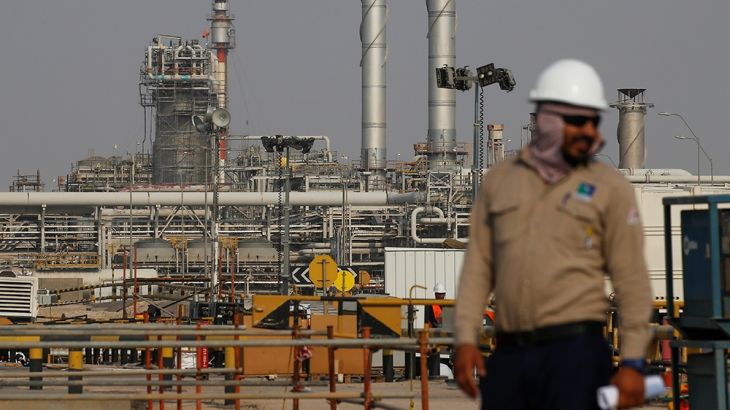
What’s behind Saudi Arabia’s oil price war with Russia?
Saudi Arabia and Russia feud over oil prices following the biggest one-day price crash since the Gulf War in 1991.
Saudi Arabia kicked off an oil price war with Russia at a time when the world is dealing with the coronavirus outbreak decimating supply chains, inducing panic buying and grounding flights.
Saudi Arabia and Russia have been working together to prop up oil prices for the past three years but the two had a falling out over Riyadh’s insistence that they agree to cut oil supplies by 1.5 million barrels a day.
Keep reading
list of 4 itemsWhy are nations racing to buy weapons?
Parallel economy: How Russia is defying the West’s boycott
US House approves aid package worth billions for Ukraine, Israel
The reason was simple. China, the biggest importer of oil, was turning back tankers as the coronavirus outbreak forced the economy to a standstill.
Oil prices had their biggest one-day crash since the 1991 Gulf War and there is more pain to come as Saudi Arabia and Russia flood the market with more oil. Goldman Sachs predicts oil prices could hit $20 a barrel.
Both nations should be able to stomach a protracted economic war, as Saudi Arabia has foreign exchange reserves of $490bn and Russia has reserves of $440bn.
Foreign reserves are important – without them an economy can grind to a halt, unable to pay for its imports and debts. This is where the situation becomes trickier.
Saudi Arabia may need to borrow money to fill the gap between what it spends and the revenue it receives. It needs oil prices of around $82 a barrel to balance its budget.
And Russia, according to the International Monetary Fund, needs oil at $42 a barrel.
But for economies weaning themselves off oil dependence, it means they have less money to spend in those areas.
What is at the heart of the fallout? Russia’s anger over sanctions targeted at its oil giant, Rosneft Trading. Washington imposed the sanctions last month over its continued support in selling Venezuela’s oil.
Moscow was hoping to get Riyadh on its side to inflict economic pain on US shale producers, who Moscow feels have been getting a free ride on the back of OPEC+ production cuts.
“They can’t keep up this fight for long,” Naeem Aslam, chief market analyst at AvaTrade, tells Al Jazeera, about the oil price war between Saudi Arabia and Russia.
He adds: “Why? Because it is killing the economies of both countries.”
Shale production has pushed the United States into the number one spot as the world’s biggest producer of oil. Moscow hopes it could lead to the collapse of some of those businesses, if oil prices remain below $40 a barrel.